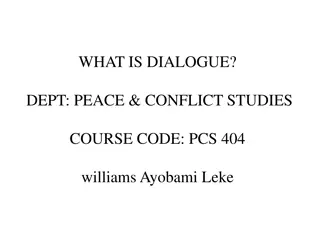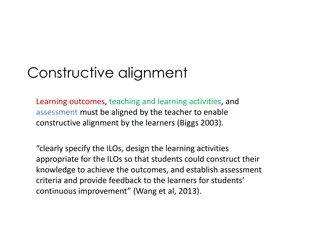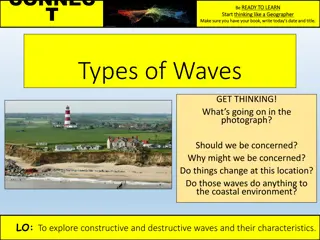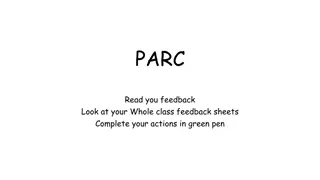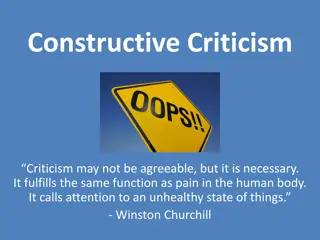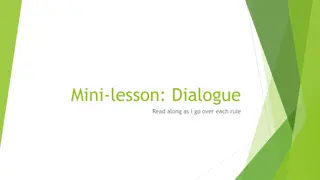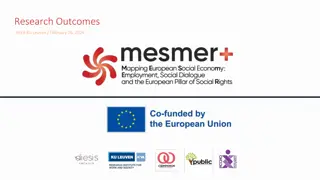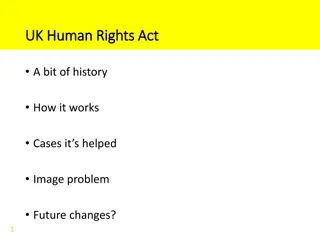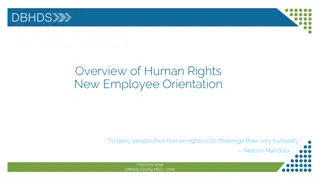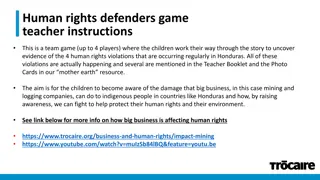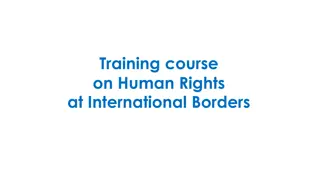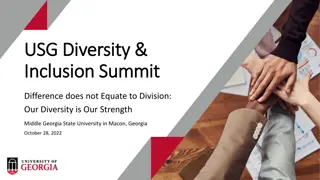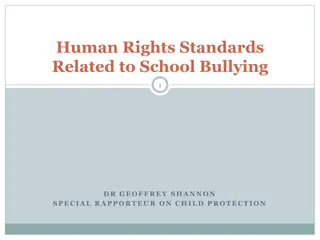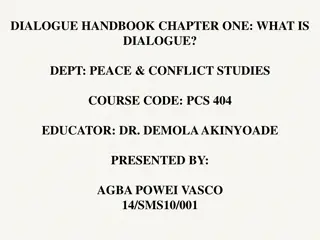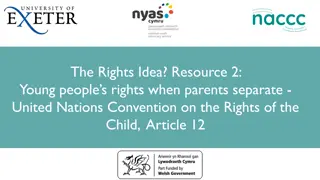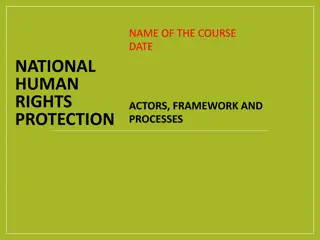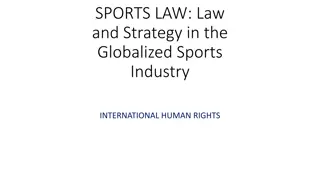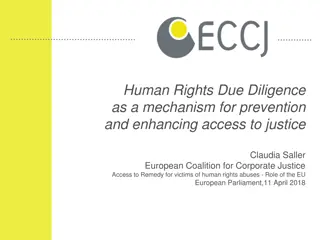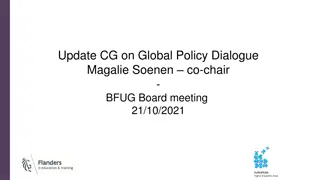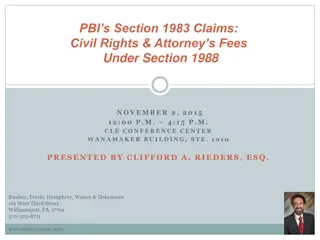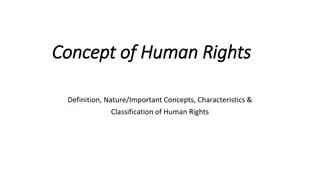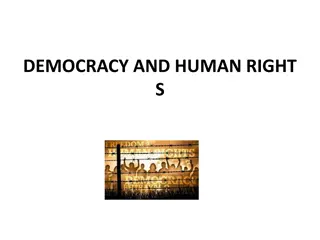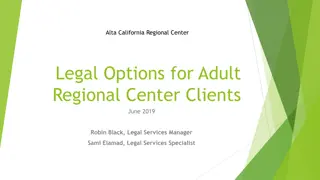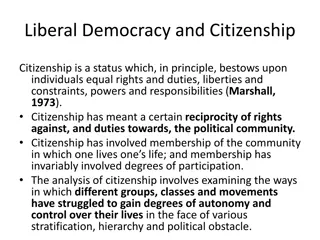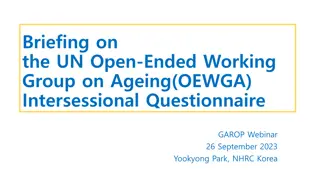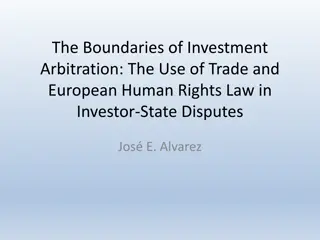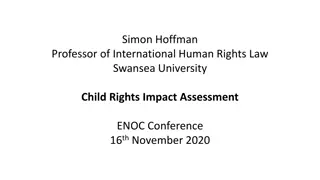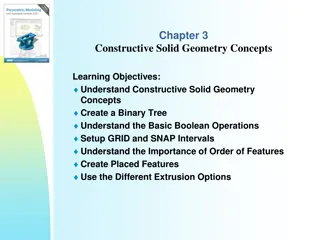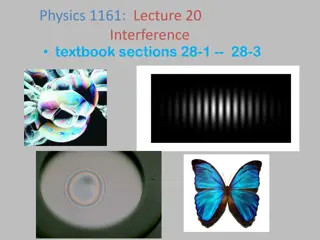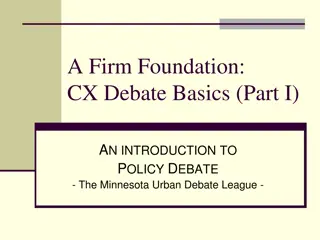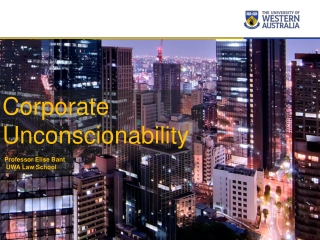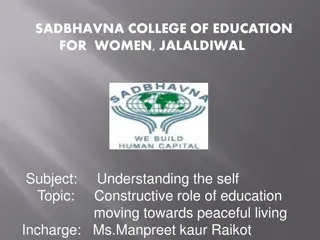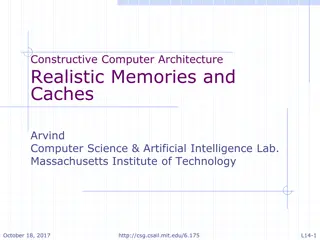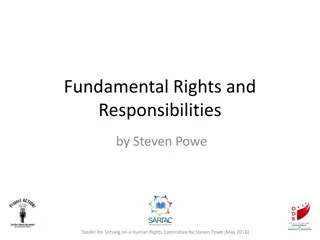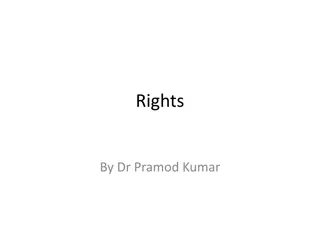Understanding the Constructive Dialogue in Human Rights Context
The constructive dialogue is a key component of the OHCHR Treaty Body Capacity Building Programme, assisting treaty bodies in comprehensively assessing the human rights situation of a state party. This process involves various stakeholders, including state delegations and treaty body members, in structured sessions over two days to discuss reports, themes, and articles related to human rights conventions. The goal is to provide expert advice and foster interactive, respectful dialogue for effective outcomes.
Download Presentation

Please find below an Image/Link to download the presentation.
The content on the website is provided AS IS for your information and personal use only. It may not be sold, licensed, or shared on other websites without obtaining consent from the author. Download presentation by click this link. If you encounter any issues during the download, it is possible that the publisher has removed the file from their server.
E N D
Presentation Transcript
The constructive dialogue OHCHR Treaty Body Capacity Building Programme
Outline What is the purpose of the constructive dialogue? Who is involved? Format and structure Example: CEDAW
The constructive dialogue Assist TBs to better understand the human rights situation of a SP Basis for the concluding observations Opportunity for SPs to receive expert advice Who is involved? Delegation of a SP Led by senior State figure Representatives with relevant expertise All TB members but Chairperson ensures an interactive effective, efficient and respectful dialogue Rapporteur/task force lead(s) preparations for the constructive dialogue
Format two public sessions (3 hours each) held over two consecutive days* Focus Initial reports: most of treaty provisions + thematic priorities/challenge Periodic reports: issues or thematic priorities Clustering of the dialogue by articles, themes or sub-themes (questions) Time allocation SP opening statement 15-30 minutes SP closing remarks up to 10 minutes Languages three working languages & fourth on exceptional basis
Example: Committee on the Elimination of Discrimination against women (CEDAW) The constructive dialogue with CEDAW lasts 5 hours: Morning session: 10.00 to 13.00 Afternoon session: 15.00 to 17.00 1 Initial reports: All CEDAW experts participate in the review of a SP Periodic reports: A task force of 10 to 14 CEDAW experts take the lead in the review of a SP*
Chronological line (morning session) 10.30 hrs: Questions on Part I of CEDAW 10.00 hrs: CEDAW chair opens session & welcomes the SP delegation Questions on Part II of CEDAW Follow-up questions & answers Follow-up questions 1 2 3 4 5 6 7 8 9 10 SP delegation answers questions on Part II of CEDAW . 13.00 15.00 BREAK Delegation has two hours to organize its answers, if pending SP delegation answers to follow-up questions SP delegation answers questions on Part I of CEDAW Introductory statement by SP head of delegation (10 to 15 minutes)
Chronological line (afternoon session) SP answers questions on part III of CEDAW 15.00 hrs SP delegation answers pending follow-up questions, if any SP answers follow-up questions SP answers follow-up questions SP answers questions on part IV of CEDAW 11 14 15 17 19 20 18 16 12 13 17:00 hrs End of dialogue. Head of delegation has 5 mins for final comments; Chairperson closes the session. Questions on Part III of CEDAW Follow-up questions Questions on Part IV of CEDAW Follow-up questions
Take into in consideration DURING THE PRESENTATION, FOCUS ON THE IMPLEMENTATION OF THE LAWS AND PUBLIC POLICIES Instead of focusing on the content of laws and public policies, tell the Committee how their implementation have contributed to make substantive equality a reality for women: 2 Which legislative and policy changes were made to eliminate discrimination against women? How did these changes improve the de facto situation of women? What are the challenges? Was there an evaluation of those laws/PP and their consequent review in order to improve them? DISAGREGATED STATISTICS are always appreciated.
Take into in consideration ONLY THE DELEGATION WILL KNOW WHAT HAPPENS IN THE DIALOGUE? The revision is transmitted through webcast. The interactive dialogue can be followed at: http://www.treatybodywebcast.org 3



